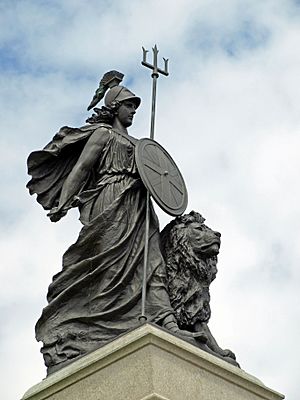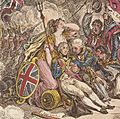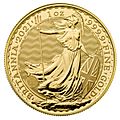Britannia facts for kids

Britannia was the name of Britain in Latin. After the Romans invaded in AD 43, Britannia was used for the Roman province, which was the main part of Great Britain. It included England, and (at times) parts of Scotland and Wales. Previously, in Celtic languages, the island had been known as Albion.
The word Britannia is still used as a general term for Great Britain, and is also the name of the mythical female figure representing the island.
Pliny the Elder, in his Natural History (4.16.102) likewise has:
- "It was itself named Albion, while all the islands about which we shall soon briefly speak were called the Britanniae".
In his Geographia, Ptolemy, writing in the 2nd Century AD, uses the name "Albion".
In 930, the English King Æthelstan used the title: rex et primicerius totius Albionis regni ("King and chief of the whole realm of Albion"). His nephew King Edgar styled himself Totius Albionis imperator augustus (August emperor of all Albion) in 970.
Alfred the Great used the word bryttania.
In Old French the word was Bretaigne which became Bretagne in Modern French and Bretayne, Breteyne in Middle English. The French word replaced the Old English words, Breoton, Breoten, Bryten, Breten, Breoton-lond and Breten-lond.
Related pages
Images for kids
-
Britannia mourning the death of Horatio Nelson, 1st Viscount Nelson at the victorious Battle of Trafalgar in a cartoon by James Gillray
-
1914 Russian poster depicting the Triple Entente – Britannia (right) and Marianne (left) flank Mother Russia, with Britannia's association with the sea provided by an anchor
See also
 In Spanish: Britannia (personificación) para niños
In Spanish: Britannia (personificación) para niños





